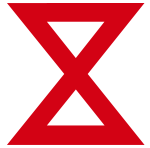| Tenth United States Army | |
|---|---|
 Tenth Army Shoulder Insignia | |
| Active | 20 June 1944[1] – 1945(?) |
| Country |
|
| Allegiance | U.S. Army |
| Branch | Regular Army |
| Type | Field army |
| Garrison/HQ | Fort Sam Houston, Texas[1] |
| Engagements | Battle of Okinawa |
| Commanders | |
| Notable commanders |
Simon Bolivar Buckner, Jr. Roy Geiger Joseph Stilwell |
The Tenth United States Army was the last army level command established in the Pacific Theater of Operations during World War II. It was commanded by Lieutenant General Simon Bolivar Buckner, Jr. until he was killed by enemy artillery fire on Okinawa on 18 June 1945.[2] Major General Roy Geiger assumed command and led the Tenth Army until relieved by General Joseph Stilwell on 23 June.
During the Battle of Okinawa, the Tenth Army consisted of XXIV Corps of the U.S. Army and III Amphibious Corps of the U.S. Marine Corps. The Tenth Army, which was unique as it had its own tactical air force (joint Army-Marine Command),[1] included the 1st, 2nd and 6th Marine Divisions and the 7th, 27th, 77th and 96th Infantry Divisions.
The Army had over 102,000 soldiers (of these 38,000+ were non-divisional artillery, combat support and HQ troops, with another 9,000 service troops),[1] over 88,000 Marines and 18,000 Navy personnel (mostly Seabee and medical personnel).[1] At the start of Battle of Okinawa 10th Army had 182,821 men under its command.[1]
In all, Tenth Army suffered 65,631 casualties during the campaign, with 34,736 being suffered by XXIV Corps, 26,724 by III Amphibious Corps, 520 to the tactical air force attached to Tenth Army, 2,636 to the Army garrison forces of Okinawa and Ie Shima, and 1,015 to troops directly under the command of Tenth Army. As noted earlier, one of those casualties was the commander of the 10th Army himself, killed by an enemy shellburst while visiting a forward position. The day after, a second general, Brigadier General Claudius M. Easley, was killed by machine gun fire.[citation needed]
Okinawa turned out to be the only campaign that Tenth Army would take part in during World War II. It was slated to take part in Operation Coronet, the second phase of the invasion of Japan, but the dropping of the atomic bombs on Hiroshima and Nagasaki, and subsequent Japanese surrender, obviated the need to invade Japan.[citation needed]
Tenth Army troops comprised the landing force which occupied the former Japanese colony of Korea, 8 September 1945. Commanded by Lt. General John R. Hodge, the Tenth was part of the United States Army Military Government in Korea.[citation needed]
References[]
- ↑ 1.0 1.1 1.2 1.3 1.4 1.5 Rottman, Gordon (2002). Okinawa 1945: The last Battle. Osprey Publishing. p. 39. ISBN 1-84176-546-5.
- ↑ Sarantakes, Nicholas (Editor) (2004). Seven Stars, The Okinawa Battle Diaries of Simon Bolivar Buckner Jr. and Joseph Stilwell. Texas A & M University Press, College Station. pp. 82, 83. ISBN 1-58544-294-1.
External links[]
The original article can be found at Tenth United States Army and the edit history here.